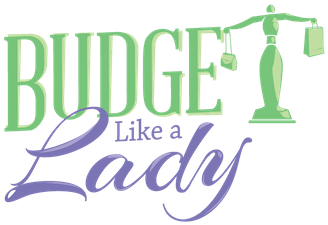How to Choose the Right 401k Contribution Rate

Plan Your Next Vacation with This Budget Breakdown
May 23, 2017
How to Go From Full-Time to Part-Time Work Without Going Broke
June 8, 2017Estimated Reading Time: 4 minutes
74% of employers offer a 401k retirement plan or something similar, according to Transamerica Center. If you are fortunate to work for one of these companies, then you might want to make sure you are contributing the right amount to your 401k to retire comfortably while living happily today. I will give you a step by step process that will help you decide what 401k contribution rate is best for you.
Step 1: How much do you need to retire?
This first step is also the most important when calculating your 401k contribution rate. Figuring out how much you need to retire is important for your future. If you know how much you need to retire, great! You can move on to the next step, if need a little more help getting this number, keep reading.
For those of you that do not know how much you need to retire, use the “multiply by 25” rule. It’s quick and easy without getting technical. With this rule you will multiply your current salary by 25 and that is the minimum amount you will need at retirement. For example, if you make $50,000 per year you would need $1.25 million for retirement.
$50,000/year x 25 = $1,250,000
See how painless that is. So, what’s your number? You will need it for the next step.

Step 2: How much do you need to save each month?
Now that you know how much you need to retire, let’s figure out how much we need to save each month to reach our retirement money goal. Use this calculator to help you find out your monthly savings amount for your retirement.
If you want to skip the calculator, just assume your salary is $50,000 per year and you will need to save $830 per month for retirement. You will need this information for the next step.
Step 3: Does your company offer a 401k match?
To help you reach your monthly retirement goal savings, let’s see how much free money your company is willing to give you. Many company’s offer 100% match up to 3% of your salary or 50% match up to 6% of your salary. Talk to your HR representative to find out what is available to you.
I strongly recommend you take full advantage of this 401k match opportunity. Like I said, it is free money. This free money will get you to your retirement money goal a lot faster and easier.
Using our example of $50,000 per year salary, let’s say your employer matches 50% of your contributions up to 6%. If your 401k contribution rate is the entire 6% to get the full match, you will have a combined total of $375 deposited into your 401k account each month.
Now that you know about your employer’s match, how much more do you need to set aside to reach your goal? If you have reached your goal by contributing to your employer’s 401k with the matching, congratulations!!! You are well on your way to a great retirement. If you still need to save more money for your retirement goals, keep reading.
Step 4: Contribute more to 401k or an IRA?
Now that you have matched your employer’s 401K contribution rate, what are you going to do with the rest of the money you need to save for retirement? If you are eligible for a Roth IRA, I recommend you save your remaining amount there until you max it out. Once you max out your Roth IRA, then contribute more to your 401K.
There are different eligibility requirements, withdrawal rules, income limits and tax benefits for each. Please check with your tax and/or accountant professional because these can vary on a case by case basis.
For more information about IRAs, read Roth Vs. Traditional IRA: Retirement Basics
Still using our example of $50,000 per year salary, we still need to save $455 per month for retirement ($830-$375=$455). I recommend contributing the $455 per month to a Roth IRA. This amount will max out your Roth IRA. If you want to contribute more to retirement, you will need to contribute more to your 401k or open a traditional IRA account.
Wow, we have accomplished a lot in this post. You know how much you need to retire, how much you need to save each month, maximizing free money from your employer for retirement, and now you are on your way to a great retirement.
How did you decide what was the best 401k contribution rate for you?


6 Comments
Great advice! I recommend maxing the dollar amount out for your 401K and also for a Roth IRA on the side plus saving in a regular brokerage account that isn’t tax sheltered. I did and eventually retired early when my job that had always been fun suddenly stopped being fun. So now I do some nice and good paying part time side gigs for entertainment and to stay mentally challenged and a lot of volunteer work and only set the alarm on days my wife and I get up early to run with friends! But I couldn’t have left the corporate world early if I had only saved at a rate that would get me there by 65. I can’t tell you how good it feels to never have to “go into work”, and to take just about every Monday and Friday off to play.
Congratulations on early retirement! Thanks for sharing your story. Very inspring!
I agree with the last comment. I have a total of 4 retirement accounts. I actually used to have 5 but I’m starting to consolidate the smaller ones. I recently started my brokerage account because my traditional savings account at the bank is a major waste of time and money. It’s nice to have something with easy access but the $0.01 interest has become insulting. I’m lucky enough to have a job that matches but also provides a separate pension. I’m fully vested though I have a long way to go before I retire. I’m just happy more people are thinking about there financial future. My mom has multiple degrees and a prestigious resume but she’ll still have to work into her 70s because she never prepared for retirement. Good read!
Having a pension is rare these days. Glad to hear that your company has some great retirement benefits!
Nice post, Nicole! I started contributing years ago to the point where it started to hurt. Nowadays I max out contributions to our 401k’s and Roth IRAs.
Great plan, Amy!